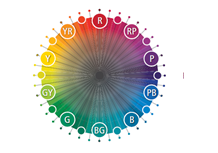In today’s textile industry, it is crucial to prioritize environmental sustainability, which is why it is necessary to have a good understanding of the various tools available to measure and enhance sustainability. Every year, manufacturers invest time to report environmental performance data. This practice is essential for evaluating performance, but it also requires substantial resources. The Higg Facility Environmental Module (FEM) stands out as a vital tool that helps facilities consistently measure and assess their environmental performance over time to support sustainability. Its roots can be traced back to the SAC, a multi-national collaboration formed in 2011.
The Higg FEM Chemical Management Section brings together the Sustainable Apparel Coalition (SAC), the Outdoor Industry Association (OIA), and the Zero Discharge of Hazardous Chemicals (ZDHC) Programme. They’re working together to combine their tools into one questionnaire to assess and manage the use of chemicals in making clothes and other products.

What is Higg FEM?
In simple terms, it is a self-assessment tool that evaluates a facility’s Environmental performance. The Higg FEM is part of the Higg Index, a set of tools designed by SAC to assess sustainability throughout the supply chain of apparel, footwear, and textile industry.
It provides a standard way to identify how well facilities perform across different environmental areas like energy use, water consumption, waste generation, and chemical management. It seeks to help businesses understand and measure their impact on the environment and find ways to do better.
Adopting Higg FEM offers numerous benefits for the textile and apparel companies:
– Measure and calculate how much a facility helps or harms the environment.
– Decrease repetition in measuring and reporting sustainability performance.
– Increase business value by reducing risk and finding efficiencies.
– Establish a universal method to communicate sustainability to all stakeholders.
– Measure and calculate how much a facility helps or harms the environment.
– Decrease repetition in measuring and reporting sustainability performance.
– Increase business value by reducing risk and finding efficiencies.
– Establish a universal method to communicate sustainability to all stakeholders.
How to use Higg FEM ?
To conduct a Higg FEM assessment, a facility first needs to register on the Higg platform and gain access to the FEM module. The evaluation begins with a self-assessment questionnaire that covers various areas of environmental impact. Facilities must provide data and documentation to support their responses.
Once the self-assessment is done, the facility can opt for third-party verification to add credibility to the results, making them more valuable for brands and retailers seeking transparency and accountability in their supply chains.
The duration for completing the Higg FEM can vary based on the extend of previously gathered data and information. Typically, facilities will need 2-4 weeks to finish the entire module, including time for internal discussion and review.
Successful implementation of Higg FEM:
Numerous brands and producers have effectively leveraged Higg FEM to drive sustainability initiatives.
Patagonia has been a trailblazer in sustainable clothing and utilized Higg FEM to evaluate and enhance the environmental impact of its supply chain. The company has established ambitious targets to decrease its carbon footprint, water usage, and waste production and has openly shared its progress.[1]
Levi’s has utilized Higg FEM to assess its suppliers and establish goals for decreasing its environmental footprint. In addition, they have initiated programs to support sustainable cotton farming and reduce water usage in their production processes. [2]
There are several other major brands, including H&M, Nike, Adidas, etc. which have also implemented Higg FEM in order to identify areas of improvement, set targets for reducing carbon footprint and water consumption, and have sustainable practices throughout their supply chain.
Conclusion:
Higg FEM is poised to play a pivotal role in driving sustainability in the textile industry. However, it has some issues. It can be difficult for smaller factories with few resources because they need to gather a lot of data and paperwork. Moreover, the lack of mandatory verifications means that some factories might not be checked, so the information they provide might not be trustworthy.
References:
- https://worldly.io/resources/measuring-your-facilitys-environmental-impact-with-the-higg-fem/
- https://howtohigg.org/fem-user-selection/fem-facility-users-landing/an-introduction-to-fem/
- https://howtohigg.org/wp-content/uploads/2021/01/Higg-FEM-How-to-Higg-Guide-2020_Nov42020v.pdf
- https://www.leadership-sustainability.com/2017/06/26/how-does-the-sacs-higg-index-fit-your-sustainability-strategy/




